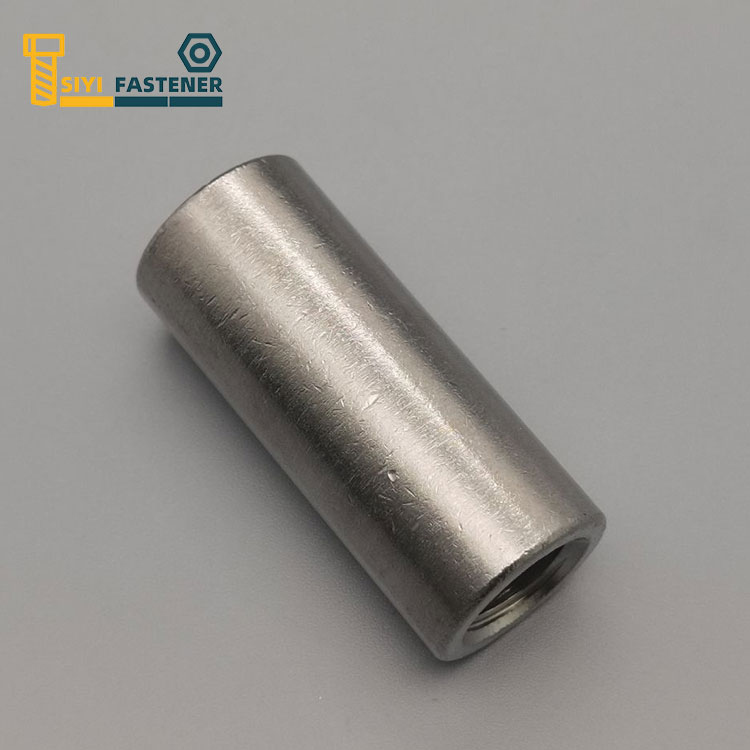Uses of coupling nuts
2023-12-25
A coupling nut is a threaded fastener designed to connect two externally threaded objects, typically threaded rods or bolts. It is a cylindrical metal nut with internal threads that extend throughout its length. The purpose of a coupling nut is to join two threaded components, providing a longer effective length for the fastener assembly.
Here are some key features and uses of coupling nuts:
1. Internal Threads: Coupling nuts have internal threads that match the external threads of the bolts or threaded rods they are intended to connect.
2. Length: The length of a coupling nut is typically greater than that of a standard nut. This extended length allows it to bridge the gap between two threaded components.
3. Hexagonal Shape: Like standard nuts, coupling nuts usually have a hexagonal shape, allowing them to be tightened or loosened using a wrench or other suitable tool.
4. Materials: Coupling nuts are commonly made of materials such as steel, stainless steel, or brass, depending on the application requirements.
Common uses of coupling nuts include:
1. Extending Threaded Rods: Coupling nuts are often used to join two threaded rods, extending their combined length. This is useful in various construction and structural applications where longer fasteners are needed.
2. Spacer Applications: Coupling nuts can be used as spacers to create a gap between two components. This is particularly useful in situations where precise spacing is required.
3. Joining All-Thread Rods: In construction and engineering projects, coupling nuts are frequently used to connect lengths of all-thread rods, providing flexibility in achieving the required length for a particular application.
4. Rod Hanger Assemblies: Coupling nuts are commonly employed in rod hanger assemblies, where threaded rods are used to support items such as pipes, conduits, or other equipment.
When using coupling nuts, it's important to ensure that the thread sizes and pitches match those of the bolts or rods being connected. Additionally, the material of the coupling nut should be chosen based on factors such as the environmental conditions and load requirements of the specific application.



